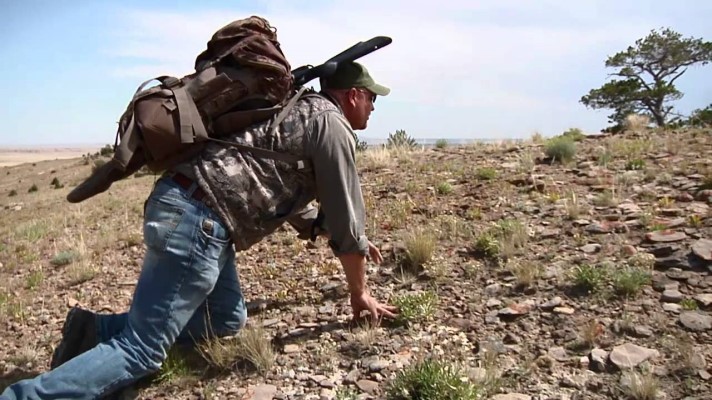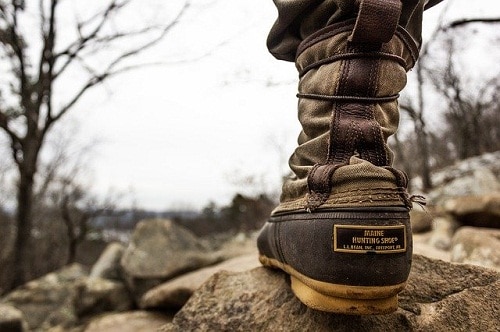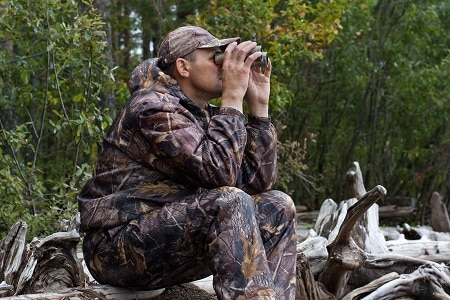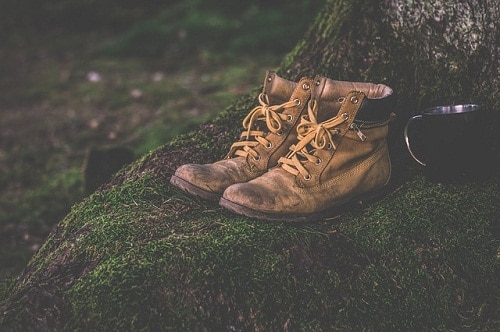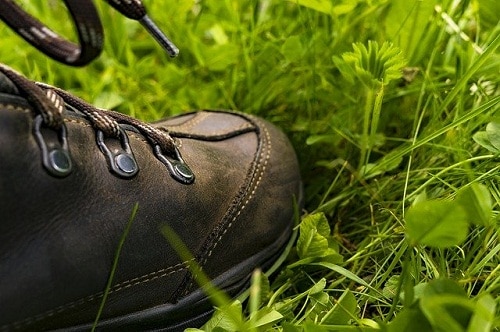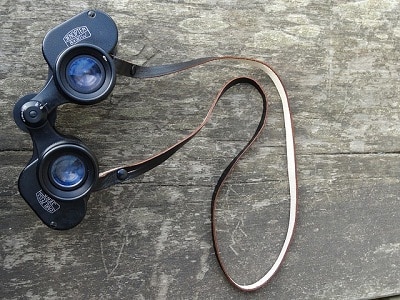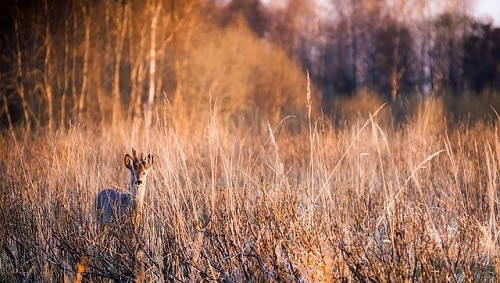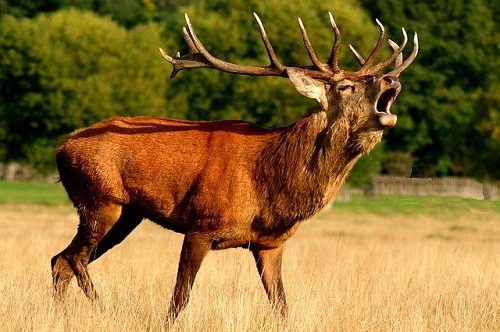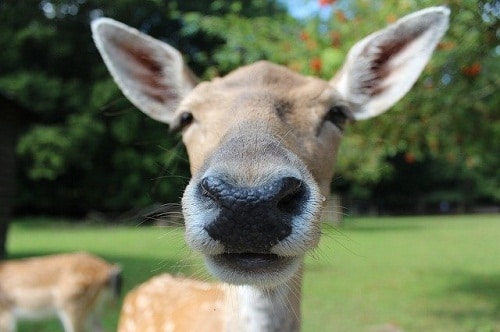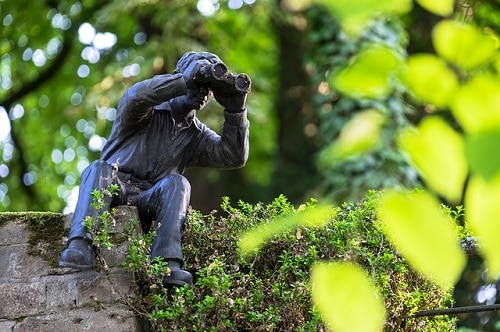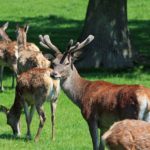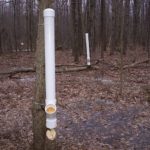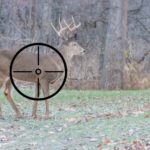Most hunters in the US use some sort of hunting stand, allowing them to sit (typically obscured by a blind or out of an animal’s line-of-site in a tree stand) and wait for animals to wander by.
This is a good way of hunting, and many hunters bag coyotes, deer, and other animals by staying still. However, it’s not my favorite way to hunt. Instead, I like to stalk the deer.
Deer stalking is thrice as challenging as normal hunting. You’re less likely to shoot a deer when you have to sneak up on it. Plus, it’s more physically demanding. Yet, it’s probably the most satisfying way to find and bag a deer.
While I focus on deer for this article, you can stalk other game animals as well.
What is Stalking?
No, this has nothing to do with creeping on somebody’s Facebook page!
Stalking is a hunting method in which the hunter moves silently through the woods on foot, tracking or spotting their game before taking the shot. This is also called “still hunting” or “spot and stalk.”
Unlike stand hunting, you have to move through the forest when stalking. You don’t wait for the deer; you go out and find the deer yourself.
Stalking requires you to master many skills, such as:
- Stealthy movement
- Observation
- Reading the wind
- Tracking
- Offhand shooting
- Patience
- Physical endurance
These can all be practiced. In fact, you’ll need to practice them all before you have at a chance of shooting your first stalked deer; most humans are just too noisy to be ignored!
However, your success or failure also depends on a hunting aspect that doesn’t relate to your personal skill: gear.
Choosing the Right Gear
Proper equipment is more important when stalking than when blind hunting.
Your standard hunting gear is good enough for getting quietly to and from your tree stand. But is it up to the task of sneaking within twenty yards of a deer?
Clothing
Everything you wear while stalking should be as stealthy as possible.
Naturally, you should wear camo that matches the area as closely as possible.
It should also be as quiet as possible. Some fabrics are quieter than others. Look for soft cotton (typically aimed at archers instead of riflemen). Avoid most synthetics, especially nylon.
Velcro will kill stealth. Snaps and zippers are better, but not by much. Look for magnetic closures, buttons, buckles, and elastic loops.
Straps are another clothing item to avoid. Though not inherently loud, a single strap catching a brush can cause enough of a racket to spoil your entire hunt!
Weaponry
You should maintain your hunting weapon in a state of readiness for the duration of your stalk.
This can be exhausting when carrying a heavy rifle, so err on the lightweight side.
You don’t even need a weapon!
Stalking is an excellent way for photographers to take amazing photos, too.
Footwear
The most important difference between normal hunting and still hunting is your choice in footwear. Most hunters wear thick, sturdy hunting boots.
Leave those at home.
You want to have light boots or shoes with soft soles. As soft as possible.
The thickest-soled boot I would use for stalking is the Belleville Tactical Research Mini-Mil. This is a semi-minimalist boot with a flexible sole. I’ve also seen someone move silently on dry leaves with New Balance Minimus shoes. Other “barefoot running” shoes are good, too.
But honestly? You want footwear with even softer soles. Or without soles.
Leather-soled moccasins are designed for deer stalking. There is no better footwear than a good deerskin moccasin. Avoid those modern moccasins with thick soles, though! You can also stalk in your socks or even with bare feet, though this isn’t safe for all environments.
Bad footwear will break every twig underfoot. Good footwear will let you move like a ghost through the woods.
How to Stalk
The actual steps of stalking are easy:
- Take a silent step.
- Stop.
- Look for deer.
- If you have a good shot on a deer, take the shot.
- If you don’t see a deer or need to get closer to one, go to Step 1.
Believe it or not, the hardest part is Step 1. Though I will admit I sometimes have trouble with the patience skill!
Stalking Movement – The Fox Walk
In order to stalk your way through the woods to a successful deer hunt, you need to master the silent step.
Stealthy movement is slow and purposeful. You should never be in a position where you can’t stop immediately, so no momentum is involved. Some people call this movement “heel to toe.” I prefer calling it the “fox walk.”
Fox walking takes lots of practice to get right, so you should practice barefoot at home first. Then, go to a local park and practice some more. After that, practice some while scouting your hunting location.
Finally, once you have it down, take the fox walk into the woods and track that deer!
How to Fox Walk
Remember: Always balance yourself so you can halt all movement without falling over. It helps to stay partially crouched the entire time, so your center of balance is lower.
- Lift your foot.
- Place your heel on the ground without putting your weight behind it.
- Lower the outside edge of your foot down.
- Roll the inside of your foot down.
- Transfer your weight forward.
- Repeat.
You need to feel for anything under your feet at every stage. A rock could cause pain, but what’s worse are twigs, dry leaves, and particularly noisy frogs.
If you find something under your foot, then abort the movement, lift your foot, and reposition.
This is why you need to wear soft-soled shoes for the fox walk to work, by the way. You can’t feel dry leaves through a clunky sole!
The Power of Observation
One half of “spot and stalk” is “spot.”
You need to use every observational tool at your disposal to scan your environment for deer and for deer signs.
Though Step 3 of stalking is “Look for deer,” you really should be keeping an eye out as you do everything else. Don’t focus too much on your foot when stepping and miss the deer in front of you.
Sight
Humans are visual creatures. Use that to your advantage.
You should always be scanning the woods around you. Notice any movement. Scrutinize any brown spot.
Deer are brown and tan, natural camouflage in the woods. However, their bodies have many smooth lines which can betray their presence. Keep an eye out for any smoothness in the otherwise chaotic forest.
Always have binoculars at the ready, even if you’re hunting dense foliage. Your only sign of deer may be a tiny patch of furry brown. Binoculars will help you identify if that’s a deer, patch of fungus, or another hunter.
Also, try to spot any deer sign you can find.
Scat and tree trunks scarred by antlers will let you know if you’re in the right part of the woods. Tracks, especially when accompanied by fresh scat, will let you know you’re heading in the right direction and close to your quarry.
Sound
Your ears are almost as important as your eyes.
Deer make many noises as they live their lives in the woods.
If they don’t know you’re there, they’ll crash through the underbrush, spar with another buck, and sometimes call to each other.
Deer can also make noises when they think something concerning might be around. If you hear stomping and snorting, that might be a deer trying to get you to expose yourself!
Stay still until the deer loses interest, then use that newfound information to hone in on your prey!
Scent
The sense of smell will work against you. You need to learn to read the wind.
Wind will carry your smell with it. If a deer is downwind, the deer will smell your human scent, even if you have properly-washed clothes, and become extra wary or even run off.
Try to keep the wind in your face. If you can’t do that, then make sure it blows your scent away from where you’re trying to go.
Wind doesn’t flow in a single, constant direction. It swirls around. Sometimes, the wind direction is different between the treetops and the ground.
You can use a powder wind detector to observe where your scent will go. A good deer stalker can also watch leaves and bushes to see which direction the wind is blowing.
More Stalking Tips
Here are some more miscellaneous deer stalking tips to help you have a more successful hunt:
- Watch for other deer. If you spot a deer and are trying to get close, it’s easy to get tunnel vision and fail to notice other deer. If you spook them, they’ll spook your target!
- Plan your approach. Travel around, not through, dense foliage. Don’t trust fallen logs; they may collapse under your weight. When approaching a moving deer, cut it off instead of traveling straight toward it. Avoid areas it’s looking.
- Remember, deer have eyes as well. Avoid open areas. Stay low, though you can stand up straight occasionally (slowly!) to scan your surroundings. Make sure not to silhouette yourself against the sky, and avoid cresting hills.
- You can move faster (or move generally, when close to a deer) if there’s something else making noise. Bursts of wind are great for this.
- Finally, move slow. Slower than you think you need to move, though you shouldn’t be a glacier. A hundred yards per hour is a good speed. You’ll be noisy and visually obvious if you’re moving much faster than that and won’t have enough time to adequately observe your surroundings.
Conclusion
Stalking is my favorite way to hunt.
It’s difficult. It requires great skill and the right shoes. Your body, mind, and patience are all tested.
But few experiences are more exhilarating than sneaking up on one of the wariest creatures in North America!
Related:
How Long After Shooting a Deer Do You Have to Gut It?
Maven RF.1 Rangefinder Review (Worth Every Penny)
Something fun: 10 Best Hunting Shows on TV and Streaming (Where To Watch)

